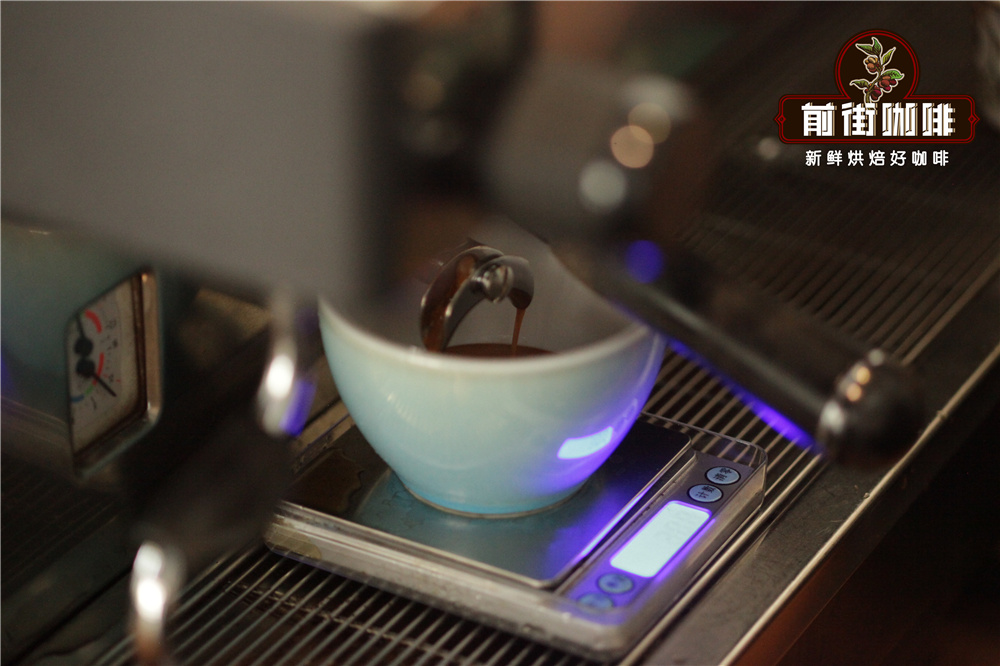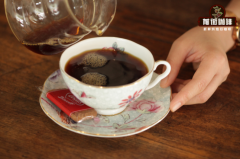What is the signature aroma of espresso? Does coffee aroma have anything to do with time?
Wake up the aroma of our coffee in the morning. It is a small and simple pleasure that we can enjoy every day. But if we take a little more time, we will find that things are not that simple! Thousands of odor molecules give espresso a famous rich aroma.
Just move the cup to your face and you can naturally feel the aroma of coffee. When we spontaneously smell the aroma from the oil slick, the sense of smell begins to play a role. For experts, olfactory testing is the second stage of espresso analysis in the order in which coffee is tasted.
Aroma is a key part of the tasting experience.
If you stop and smell the fragrance of the cup methodically, long and slow, you will feel more changes and complex notes. These flavors can include fruits, flowers, spices and chocolate. All these indicate the hue of the composition of the mixture. Our sense of smell can perceive many aromatic features, including the positive qualities and defects of coffee.

When analyzing the aroma, the sense of smell also perceives:
Complexity: the term defines a full-bodied aroma that is fused together in fine, perfect balance. In general, you can achieve good complexity by mixing different places of origin and evaluating the baking degree.
Intensity: the aroma and aroma released by espresso reach and stimulate the olfactory epithelium, determining the intensity of the smell.
Fineness: like the best wines, if we consider that there are more than a thousand flavor molecules associated with coffee beans, we look for major flowers, fruits, spices and countless more aromas even in coffee. A specific personal aroma can be easily captured in exquisite coffee.
Long-lasting. This is the time for the aroma compounds of coffee to stay on the taste. As each minute goes by, the lasting symbol changes, and the taste becomes round and bitter slides into sweetness. It is important to take the time to observe persistence because you will find surprising revelations.
In order to correctly evaluate the aroma characteristics of coffee, a single cup is judged quantitatively, but the most important thing is qualitative judgment.
Quantitatively, it is understood as the full spectrum of aroma and its intensity.
Qualitatively, taking into account the fineness, diversity, complexity, cleanliness or any defects that significantly affect our sense of smell.
In view of this, in the process of post-nasal smell, it is important to determine not only the persistence (duration) of coffee aroma, but also the rich range of coffee aroma.
Numerous volatile aromatic compounds derived from the roasting process give espresso a typical "roasting aroma".
Depending on the variety, quality and preparation method, from this aromatic tone, one can feel the aroma of caramel and grain, giving the coffee the aroma of toast, biscuits or bakery. or there may be a slight smell of butter and vanilla and cocoa smell of all sweet forms of chocolate.
The exquisite fruity aroma of coffee is reminiscent of fresh citrus notes such as lemon, similar to that of Rosa Coffee, but also similar to the sweetness of pulp. The aroma of dried fruit will not go away, with hints of figs, plums, raisins, dates and apricots. At first, the delicate scent of flowers surprised the sense of smell, reminiscent of jasmine or wild flowers, which are common in Ethiopian coffee, sometimes turning to honey.
The cream of espresso beans can release the flavor of roasted walnut, almond and hazelnut, or the aroma can range from the hue of oriental flavor to the simple smell of seasoning wood to the nuances of wine and spices such as pepper, tobacco and rhubarb.
What's the secret to getting the aroma?
time. It takes time to get a delicate aroma, and coffee is no exception. If the coffee is roasted too fast, some aromas will never be produced. Never. In addition, if you do not let the coffee rest after roasting, some aromas will not be produced. Never.
Important Notice :
前街咖啡 FrontStreet Coffee has moved to new addredd:
FrontStreet Coffee Address: 315,Donghua East Road,GuangZhou
Tel:020 38364473
- Prev

How do coffee grounds need to be stored? what's the effect of coffee grounds?
When you finish a cup of hand-brewed coffee, you always clean up the coffee grounds, or it's good to store them without cleaning them, so what do you do with the coffee grounds left over from these boutique coffees? Qianjie Coffee has written a number of articles on how to recycle used coffee grounds for uses ranging from skin care products to household reuse to DIY crafts. If used coffee grounds are properly stored
- Next

What is the color of Crema Crisma Coffee Coffee has anything to do with extraction
Espresso Cleima, compared with espresso, Crema is often mentioned. It refers to the light color layer formed on the surface of brewed coffee during the extraction stage. When brewing espresso, carbon dioxide from compacted fresh coffee grounds meets hot, pressurized water, resulting in trademark bubbles. Klima tells a lot about the coffee we're going to drink, and we have
Related
- What brand of black coffee is the most authentic and delicious? what are the characteristics of the flavor of the authentic Rose Summer Black Coffee?
- Introduction to the principle and characteristics of the correct use of mocha pot A detailed course of mocha pot brewing coffee is described in five steps.
- Which is better, decaf or regular coffee? how is decaf made?
- How much is a bag of four cat coffee?
- How about four Cat Coffee or Nestle Coffee? why is it a cheap scam?
- Which is better, Yunnan four Cats Coffee or Nestle Coffee? How about cat coffee? is it a fake scam? why is it so cheap?
- How about Cat Coffee? what grade is a hoax? which instant coffee tastes better, four Cat Coffee, Nestle Coffee or G7 coffee?
- Process flow chart of coffee making-Starbucks coffee making process what coffee tastes good at Starbucks
- The top ten best coffee beans in the world Rose summer coffee or Tanzanian coffee tastes good
- Yunnan four cat coffee is good to drink?_four cat coffee is a big brand? four cat blue mountain coffee is fake?

